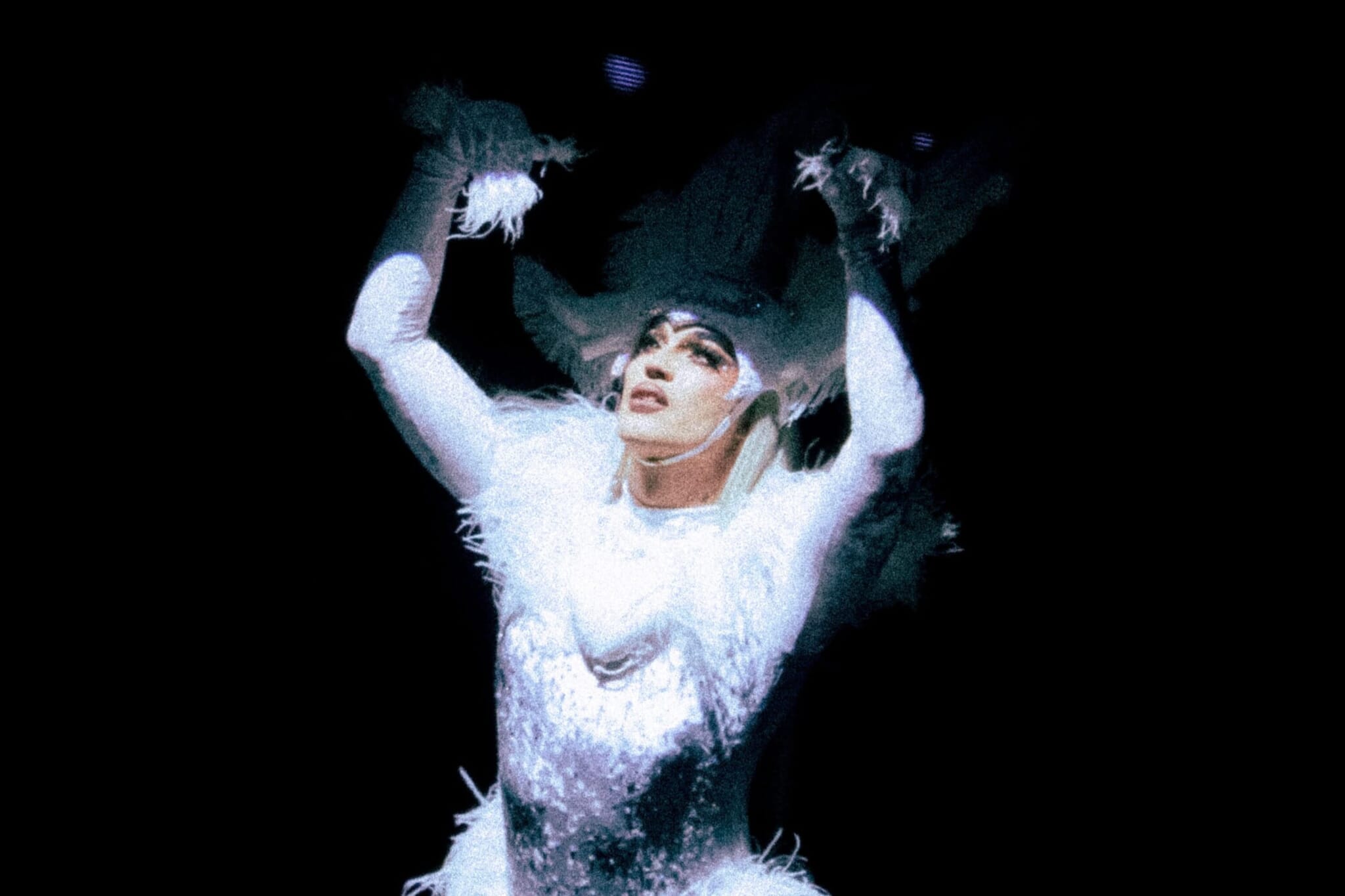This article appeared in Tokyo Weekender Vol. 3.
To read the entire issue, click here.
In the past decade, the art of drag has exploded in mainstream popularity; no longer is it just an underground, safe space for queer expression. Drag queens have always played a crucial role in the advancement of LGBTQ rights, challenging the rigid boundaries of gender, sexuality and self-expression.
Tokyo has its own vibrant drag community, and it boasts an incredible crew of local queens. Recently, the fourth volume of Opulence, Japan’s first large-scale drag show, was held at Zepp Shinjuku, starring former RuPaul’s Drag Race competitors Alaska, Willam and Courtney Act, as well as an array of Tokyo’s own drag queens.
The Tokyo queens brought energy and talent to the Shinjuku club, lip-synching and dancing for an audience of thousands. After the show, TW sat down with four of these iconic queens, including the fearless MC, MissLeading — a rare cisgender woman who performs drag — as well as gorgeous performers Sera Tonin, Vera Strondh and Labianna Joroe.
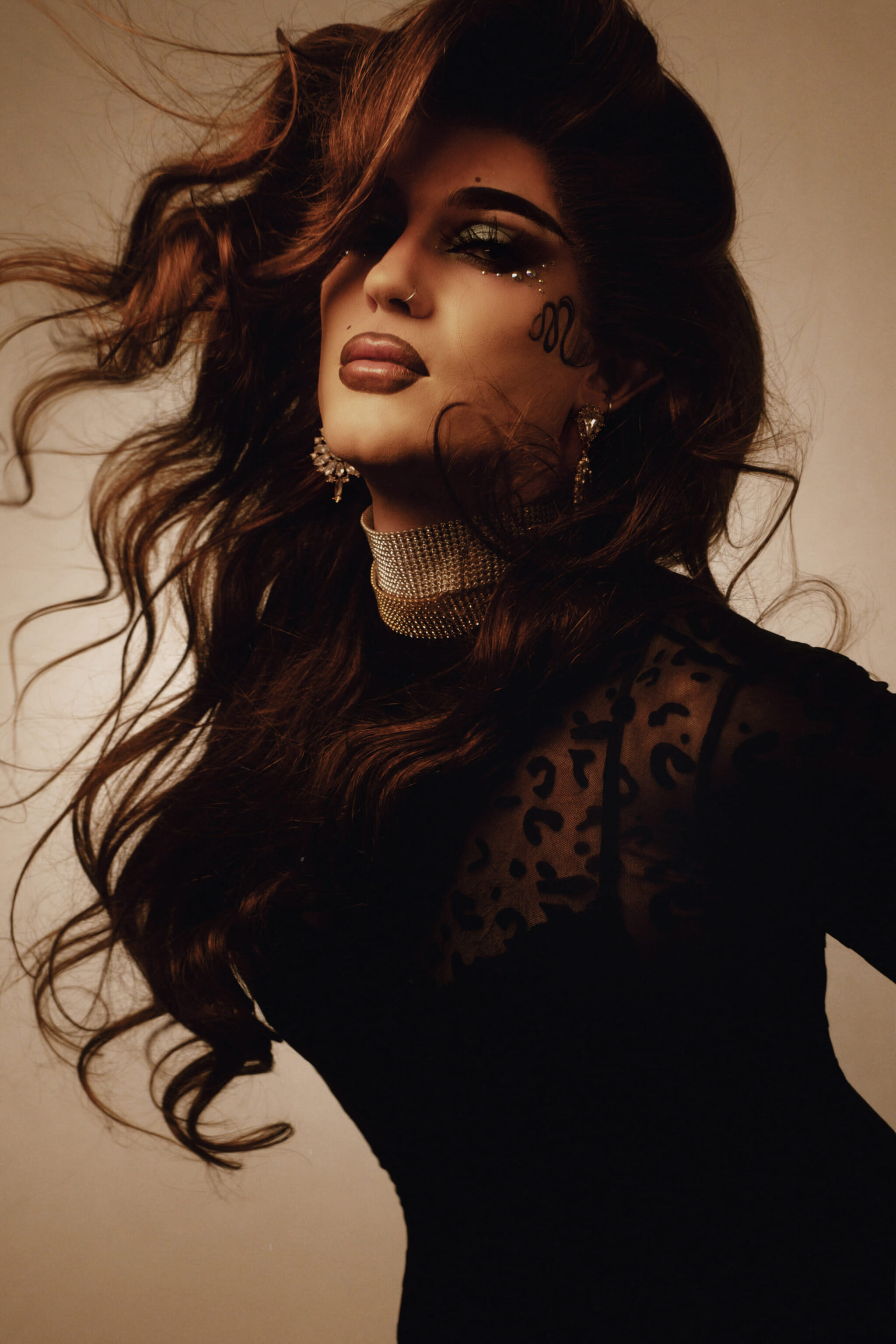
Sera Tonin
What’s your drag style like?
MissLeading: It’s camp, fashionable and silly. Very MissLeading!
Sera: Visually, I’m pretty silly, as in, She’s a pretty girl, but she’s a clown. My performances tend to be a story; I like to invite audiences on a journey full of serotonin and things that make me happy.
Vera: She’s very hip-hop, R&B and street style. Also — I’ve been wearing sneakers in drag for a long time. It’s a statement of mine that every type of clothing is still drag. People gave me backhanded compliments, [implying] that I was just a dancer and not a drag queen because I don’t wear heels. But I do make sure to cover them with Swarovski crystals!
Labianna: My drag style is sexual, educational and eclectic. Going to clubs since I was 18, I know there’s a lot of stigma around club culture. I wanted to implement an element of sexual education in my performance.
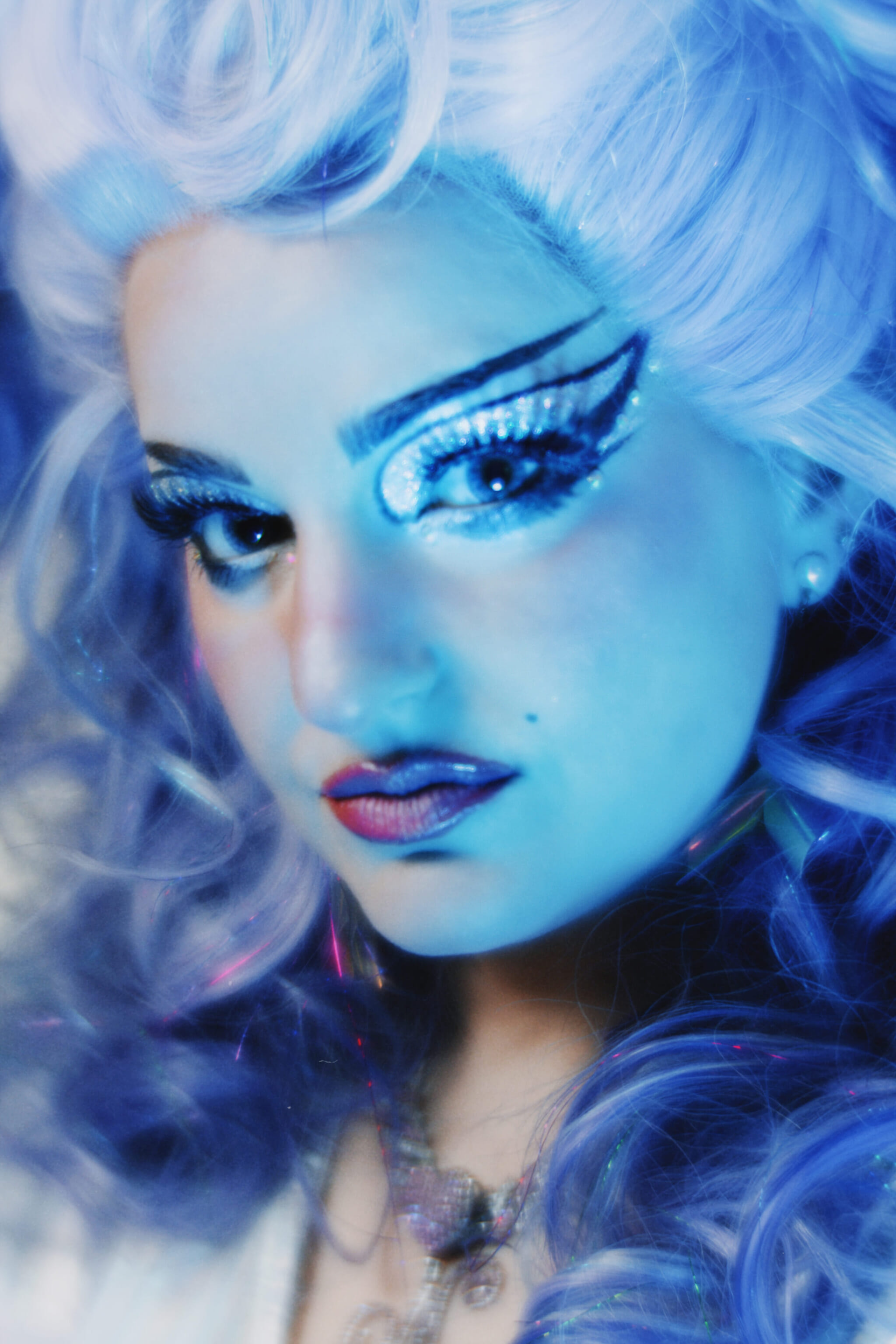
MissLeading
What’s your favorite thing about drag?
MissLeading: The artistry. You can explore so many different aspects of art and really hone in on your talents.
Sera: The unfiltered self-expression. It’s incredible to witness firsthand how an eyelash and a wig can make someone’s confidence skyrocket. The disguise lets them be their true selves.
Labianna: How we can transform people. The way people interact with us when we’re in drag is a lot more emotional and open. I call it the Mickey Mouse syndrome — when you see Mickey Mouse at Disney, you don’t think about the person who’s inside. I think it’s kind of like that.
Vera: I get to live my fantasy of being that strong female that I wanted to be when I was young. We’re artists. Like, Labi’s drag includes politics and education in a revolutionary way, and Sera shows her art through her wigs and tells a story with what she performs.
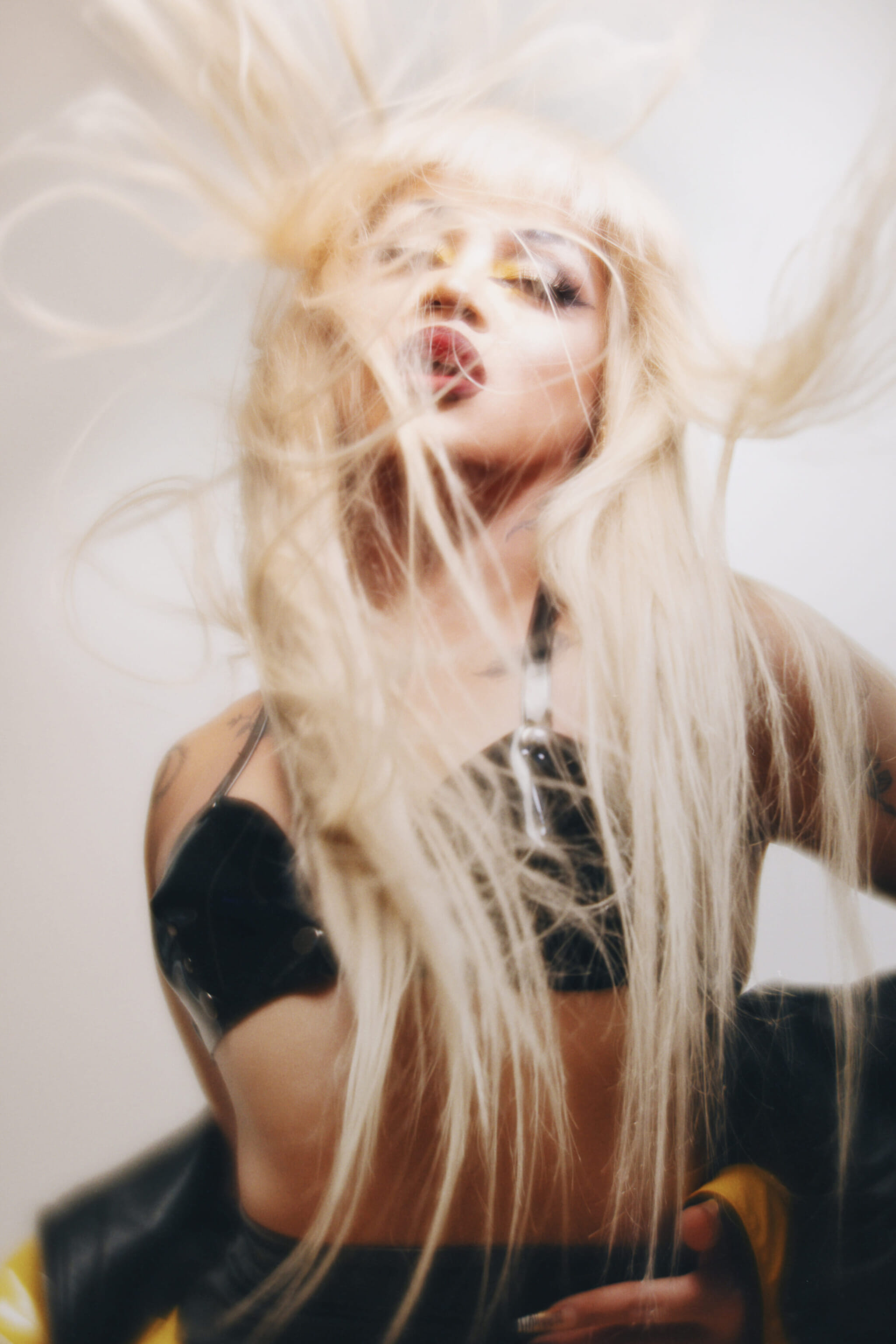
Vera Strondh
What’s the Tokyo drag scene like?
MissLeading: I feel like drag is too serious sometimes, especially in countries where the drag scene is bigger or has just been around longer. Tokyo feels more relaxed.
Sera: What makes Tokyo drag different is 100% the freedom of expression. Tokyo’s known for its diverse styles, hyper fashion and being ahead of the game; that reflects in the drag here, too.
Vera: The audience overseas might be a little more crazy than in Japan. The tipping culture is definitely different, like, when you compare a ¥100 coin to a one-dollar bill, it’s easier to tip overseas. At Eagle Blue, where I work, most of the audience is foreign, so the atmosphere is probably the same as abroad. Outside of Tokyo, though, like in Nagoya or Osaka, sometimes the audience won’t know how to react when I go from a cartwheel to a dip. I’m like, “No, I want you all to go crazy!”
Labianna: In Tokyo, you have to hustle and make connections. In Nagoya, you have to drink, and in Osaka, you have to be funny. The style of drag is also definitely different in Japan — it’s more hostess-style. You sit down with the audience and drink with them instead of just performing. That’s also changing though, with shows like Opulence.
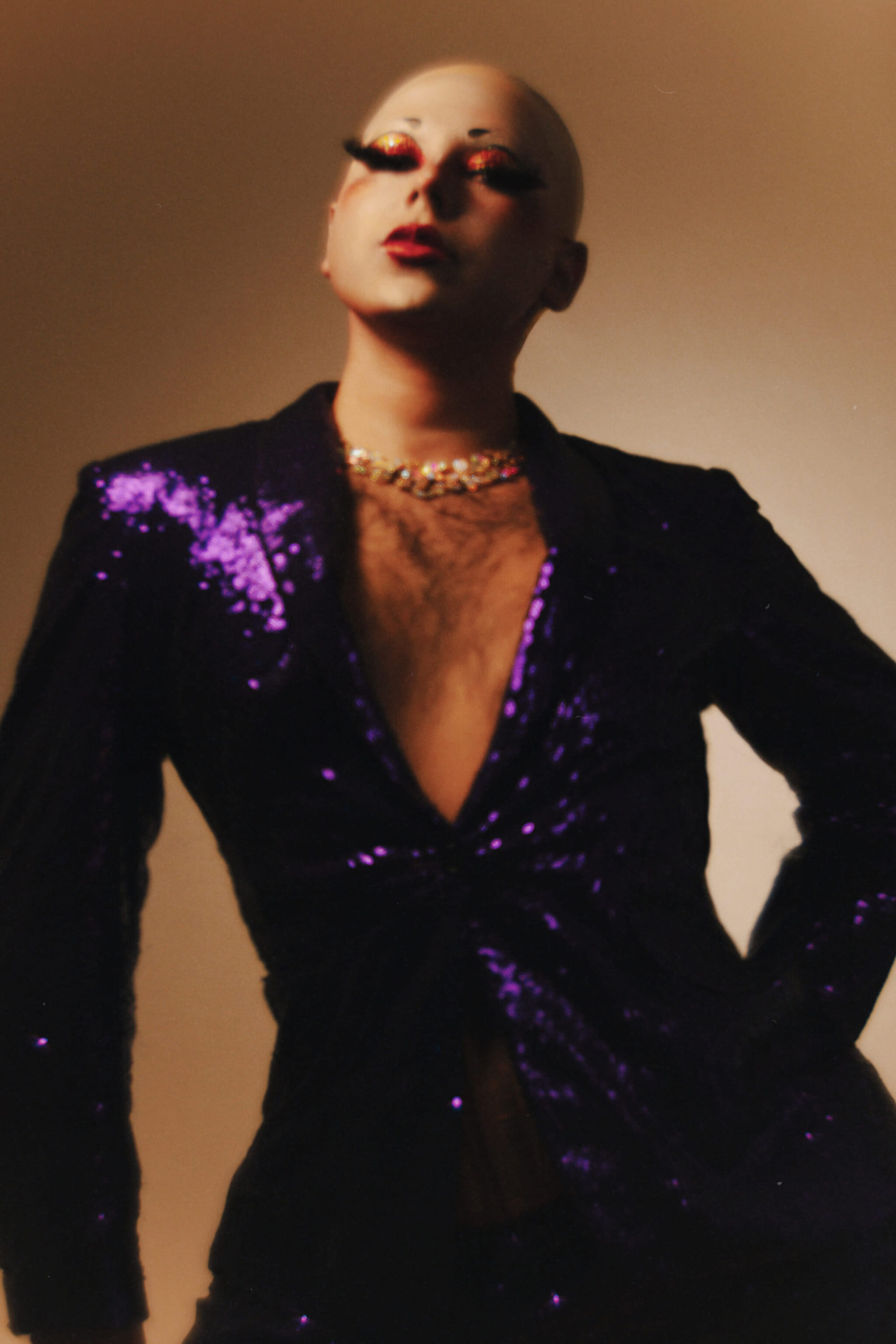
Labianna JoRoe
What was your experience performing at Opulence like?
MissLeading: I’ve MCed twice now, and each time, it’s gotten easier to do. The audience is always such an amazing confidence boost.
Sera: I’m blessed to have performed for each Opulence we’ve held, and it’s been a fast track for us to really grow as performers. It’s honestly been a dream come true to have the opportunity to share my art form with such a receptive and huge audience.
Vera: It’s a roller coaster of emotions! It gives us stress, motivation and fire. The last bow is always so heartwarming, though. I always get teary-eyed.
Labianna: It’s really overwhelming, like, you don’t realize how large the audience is. When I first performed at Opulence, I almost peed my pants. I’d never been in front of that many people before. Also, we’re getting compared to the international RuGirls. But it’s so rewarding to hear people say, “The Tokyo queens were slaying it.”
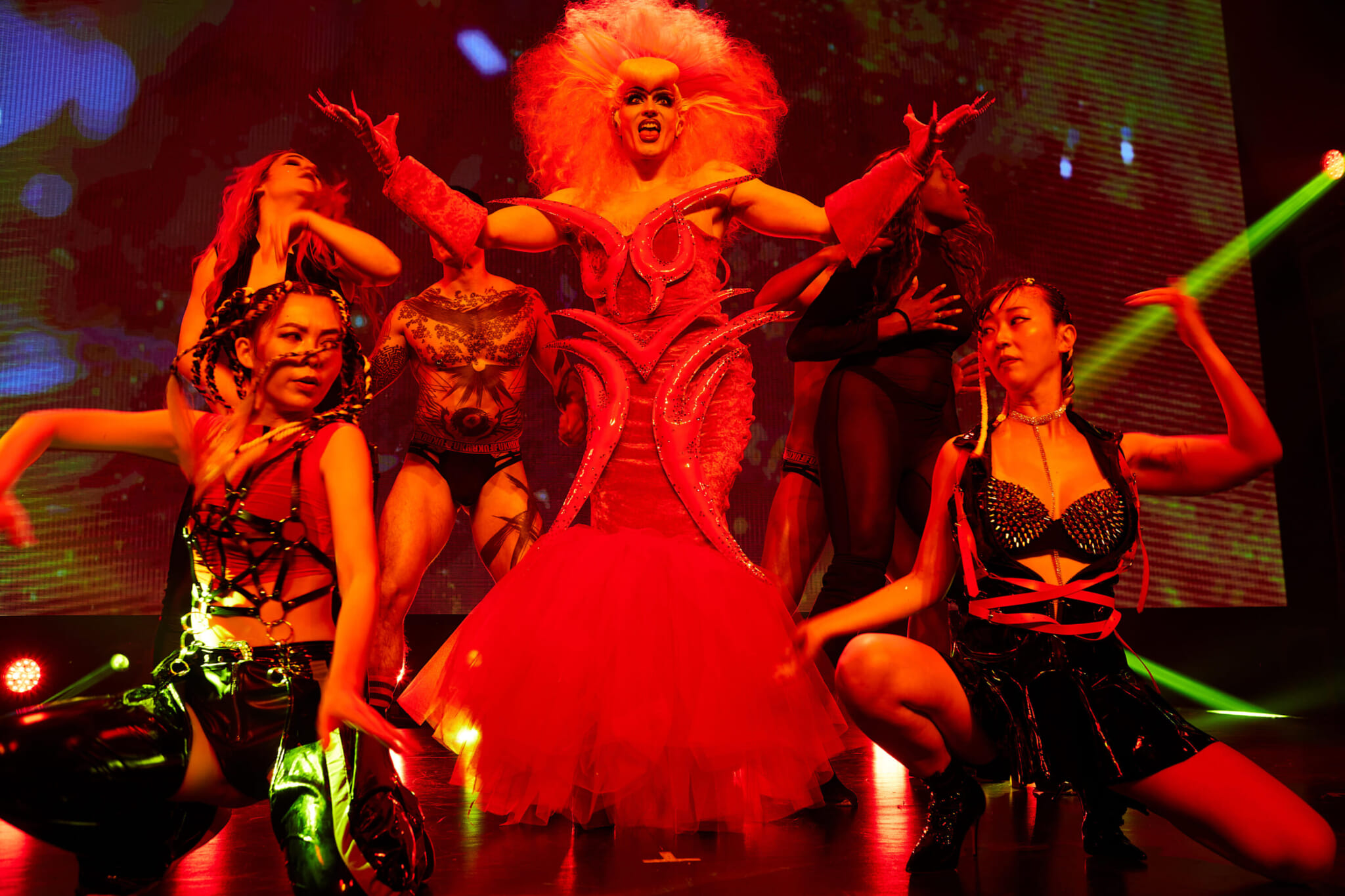
Any funny stories?
Vera and Labianna: Sera is just really easy to read.
MissLeading: Most of them involve Sera breaking something …
Sera: I have been known to be the breaker of things in new venues — unintentionally, of course! I once was halfway through a number, and it was the slow part of the song. I went to sit on the table to seduce this lovely lady, and I snapped the table in half with my body weight, and food and drink went all over her. She found it hilarious, thank goodness. I was mortified!

Do you have any advice for people just starting out in drag?
MissLeading: Find what works for you, be interactive with your audience and, most importantly, be yourself.
Sera: Find what makes you happy. Find that thing that makes you shine from the inside out, and bring that on stage with you. The audience can feel when someone’s nervous or overthinking, but if you walk onto that stage feeling joy and love, then everyone will feel that, too. Makeup and wigs all take practice, but you have time and support for that.
Vera: Don’t limit yourself with a certain image. Don’t be scared to explore, because while doing that, you’ll be able to find “you” and the image that best represents you as an artist.
Labianna: Believe in your point of view and essence, so people can believe in you.
What advice would you give to young queer people in Japan?
Sera: Show up to your queer spaces, take up space, be seen, be heard, show the beauty of our community and how Japan needs to accept queer marriage and queer rights — you are their citizens and deserve the right to be yourself and love how you love.
Vera: Don’t be scared, and don’t be ashamed of who you are. If you want to wear those sneakers covered in crystals, go out and show them those sneakers!
Labianna: Blame others when you feel like an outsider. If people around you can’t understand you, they’re boring.
Find the Tokyo queens on Instagram at @themariapapadopoulou (MissLeading), @yeah_im_good_thanks (Sera Tonin), @vera.strondh (Vera Strondh) and @labiannajoroe (Labianna Joroe).

